Which temples do you need to see at Angkor? How many days does it take to visit them all? What’s the best way to get around temples of Angkor? Fortunately, after reading this guide, all you have to do it worry about setting your alarm to watch the sunrise! Well, almost…
Angkor Archeological Park and Angkor Wat is a highlight of any trip to Cambodia or along the Banana Pancake Trail. The ancient city of Angkor was once a vast civilization with a population of over 1 million people until it mysteriously collapsed and was subsequently absorbed back into the jungle. Today, Angkor Wat rivals Macchu Picchu and the Great Pyramids in its ability to inspire awe in every visitor.
Spread out over a vast area, it’s likely that you’ll spend either one jam packed day or multiple days temple touring and fulfilling your own Indiana Jones or Tomb Raider fantasy. Before we dive into the logistics, let’s look at the basics for visiting Ankgor Wat.
How do you get to Angkor Wat?
Angkor Wat is located adjacent to Siem Reap , the jumping off point for anyone exploring the temples of Angkor. Siem Reap is easily accessed by plane or bus. For more details on getting here or get tips on Siem Reap, check out our Cambodia Itinerary planner.
How much does it cost to visit Angkor Wat?
There are three options for visiting the temples of Angkor.
- One day ($37 (valid only on the day of purchase). The essential package.
- Three days $62 (valid for 10 days from the date of purchase) Typically the sweet spot.
- Seven days $72 (valid for one month from the date of purchase). For serious temple buffs or those hanging out in Siem Reap for an extended period of time.
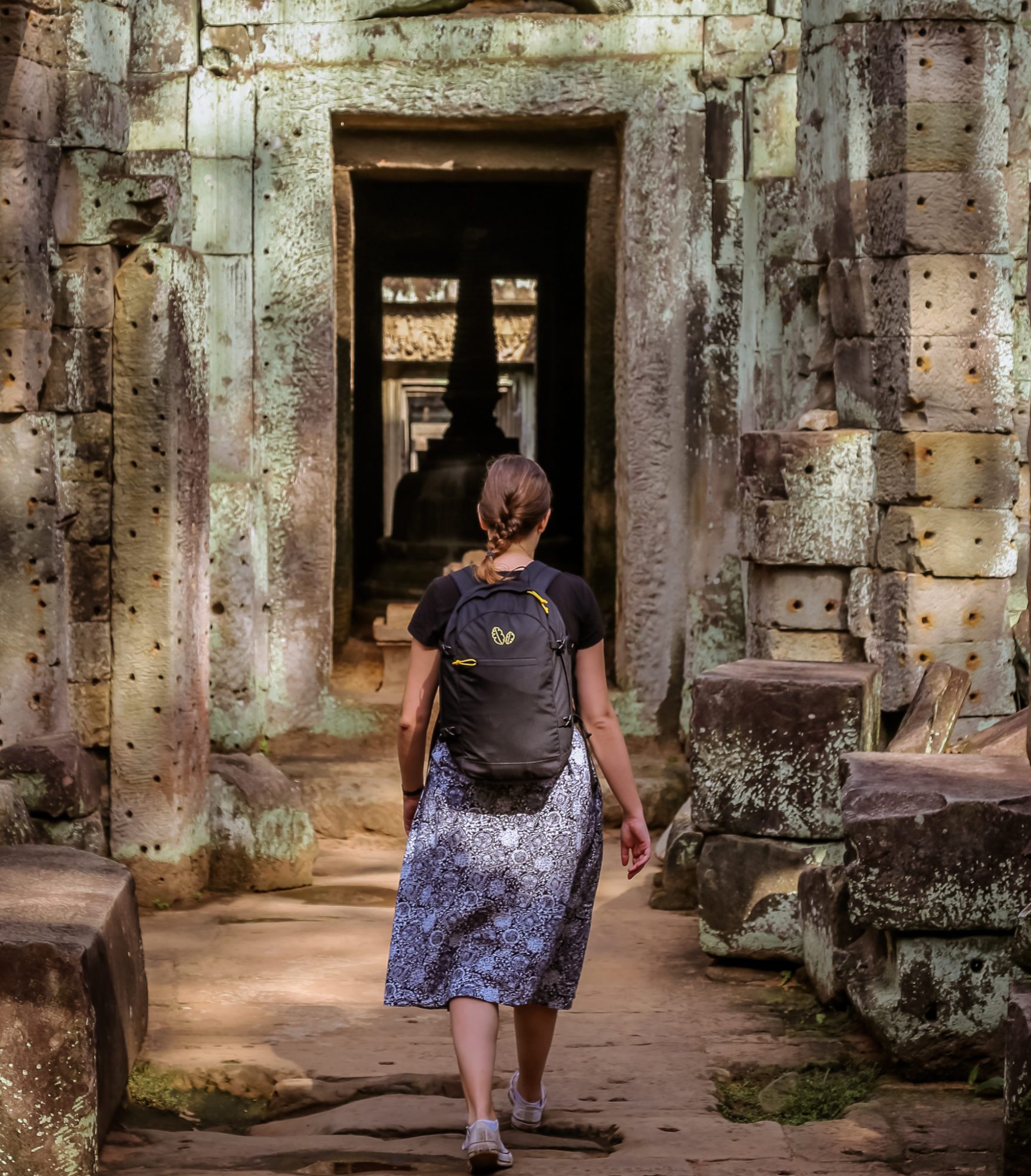
What to pack for Angkor Wat
- A small everyday backpack like our Kiri pack.
- Water (lots) and a few snacks.
- Your ticket (it will be checked at numerous checkpoints).
- Sunscreen.
- A hat.
- Sunglasses.
- Bug spray.
DON'T FORGET THIS!
Unfortunately, when you’re riding bikes on busy roads, and climbing steep slippery steps up ancient temples, medical emergencies can happen and you need to be prepared! A friend of ours was medevaced to Bangkok from Cambodia and spent several weeks in the hospital there to the tune of $750,000. Fortunately, she had travel insurance!
Check out World Nomads* for a quote. Their coverage includes medical emergencies, luggage & gear and trip cancellation. Hopefully, you never need to make a claim, but if you do you’ll be beyond happy you were prepared!
When to buy a ticket for Angkor Wat?
Buy your ticket the evening before your day of exploration anytime after 5pm to avoid having to make an extra stop to the ticket booth on your first morning. You’ll also get access to the Park that night, offering you the bonus of watching the sunset to kick off your temple touring. The most popular sunset spot, Phnom Bakheng, was extremely busy pre-pandemic but less so as of our last visit in 2022. The temple Pre Rup is also open until 7pm and is a great way to start your adventure after buying your ticket.
What should you wear to visit Angkor Wat?
The Angkor Park remains an active religious site. As such, it’s recommended that you wear a shirt that covers your shoulders and shorts/pants/skirt/dress that extend below your knees. Individuals not meeting this dress code have been rejected entry in some cases, so do air on the side of caution and respect. Beyond these considerations, wear something comfortable and breezy as the heat here can be stifling.
Scams at Angkor Wat
While rare, in some of the smaller temples you may be chatted up by a child or adult who gives you a tragic tale about a series of unfortunate events that led them to a very poor financial position. The conversation may start out as just a friendly conversation that you can easily mistake as getting to know a local, but it will inevitably find its way to their dire situation. These individuals are generally cons, so do your best to get out of the conversation and politely leave when it starts taking a turn. There are plenty of ways to help out by donating your money or time to organizations truly making a difference in Cambodia, so choose this option instead to be a responsible traveller.
How to get around the Temples of Angkor
Angkor Archeological Park is big, really big! In light of this, walking from temple to temple is out of the question. Generally the two most common options are traveling by hired tuk-tuk or by bicycle,
Hire a tuk-tuk to take you around Angkor
$15-20 for the day
From the minute you arrive in Siem Reap, every driver, tuk-tuk driver, and tout will ask you how you plan to see the temples and eagerly offer their expert guiding services to you. Seeing the temples by tuk-tuk is a great way to go when it comes to staying as comfortable as possible in the Cambodian heat. Generally, many tuk-tuk drivers have a good idea of which temples to visit and at which times. They’ll help you plan out your itinerary and wait for you while you take the time to tour each one. Often the biggest challenge is finding the right driver. I’ve had good luck taking a driver affiliated with my hotel, hostel or guesthouse and usually recommend going this route. Alternatively, talk to a few before committing and pick the person you like the best!
Rent a bike and pedal around Angkor Wat
$1-9 (bike quality dependent)
Cycling is a great way to explore the temples of Angkor and truly appreciate the beauty of the magical scenery in this area. Many hotels and guesthouses make bikes easily available for rent to guests. Don’t underestimate this though, as you can easily be cycling for 17 km (Small Circuit) or 26 km (Big Circuit) in the scorching Cambodian heat depending on the route you choose. If you decide to take a bicycle, be prepared to sweat, and remember to bring a headlamp if you go out for sunrise. I’ll never forget the intense paranoia I had of becoming roadkill in the pre-dawn as hundreds of tuk-tuks and tour buses cruised past me as I peddled furiously along the road to Angkor Wat. If you need help planing your cycling excursion, use the map and guide below.
Best hotels and hostels to stay at for visiting the temples of Angkor
You’ll be staying in the nearby town of Siem Reap which offers innumerable places to stay. I asked Anika, a member of our team, to weigh in on the best options as she’s been living in Cambodia since 2018 and visiting Siem Reap every couple months.
For 2023, her top picks are:
- Lub’d or Onederz for budget travellers looking for a social hostel close to everything happening in town.
- For a mid-range option check out the Primefold Hotel.
- If you’re looking to splurge, don’t miss the Treeline Urban Resort.
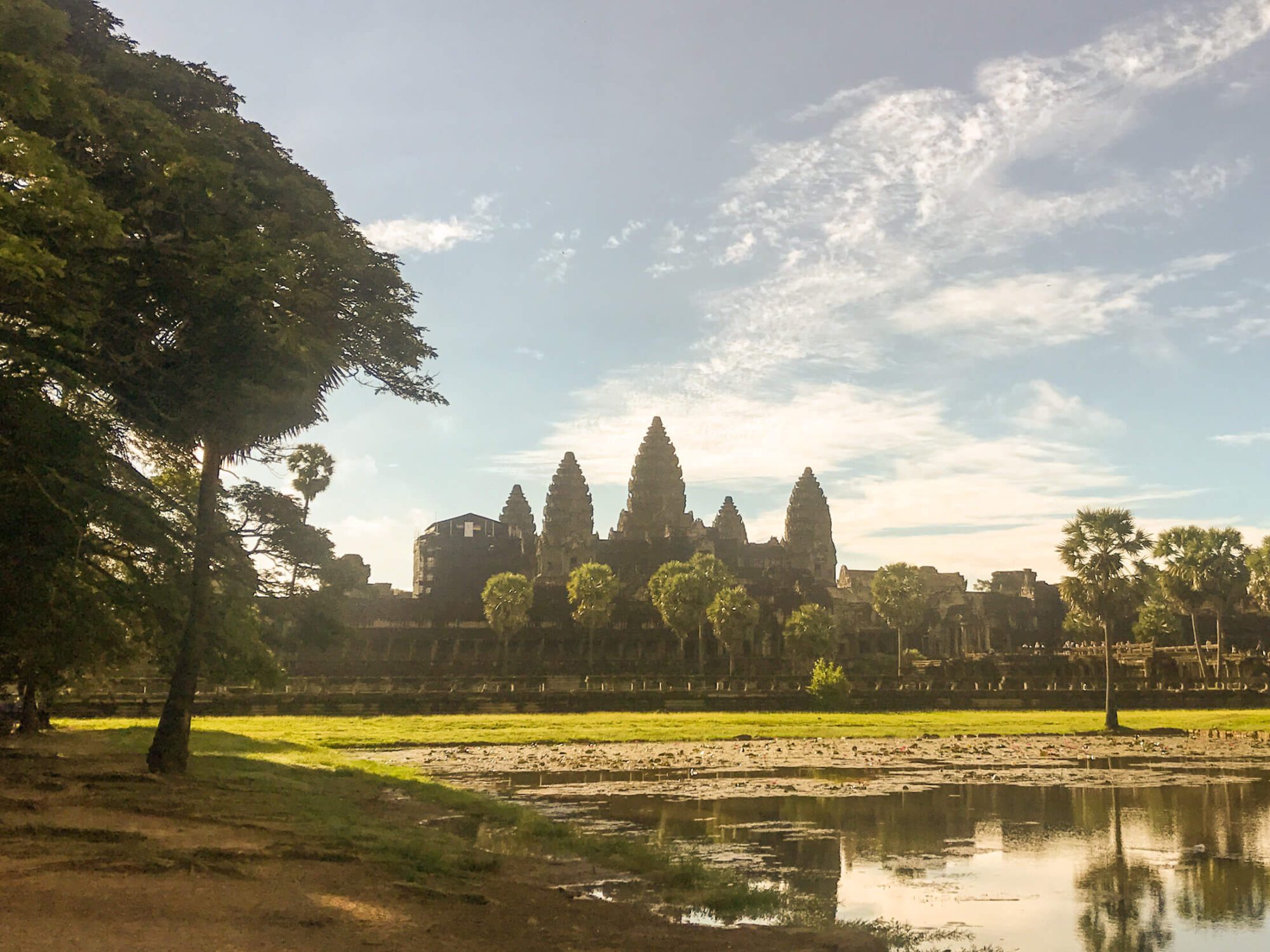
Navigating the Temples of Angkor - the small loop and big loop
The Angkor Park is broken down into 2 loops:
- The Small Loop (~17km)
- The Big Loop (~26km)
If you’re visiting Angkor for 1 day you will likely stick to the highlights of the Small Circuit.
If you have 3 days, you’ll move onto the Big Circuit.
If you have even more time, you’ll be able to spend a lot of time wherever you want and double down on your favourites.
What temples should you visit at Angkor?
Deciding which temples to visit depends on how much time you have and how quickly you get “templed out”. Use the descriptions of the temples below to help you decide which temples are your own “must-sees”. I’ve marked several temples as must sees to help you narrow your choices if you’re short on time.
Temples to visit in the Angkor Small Loop
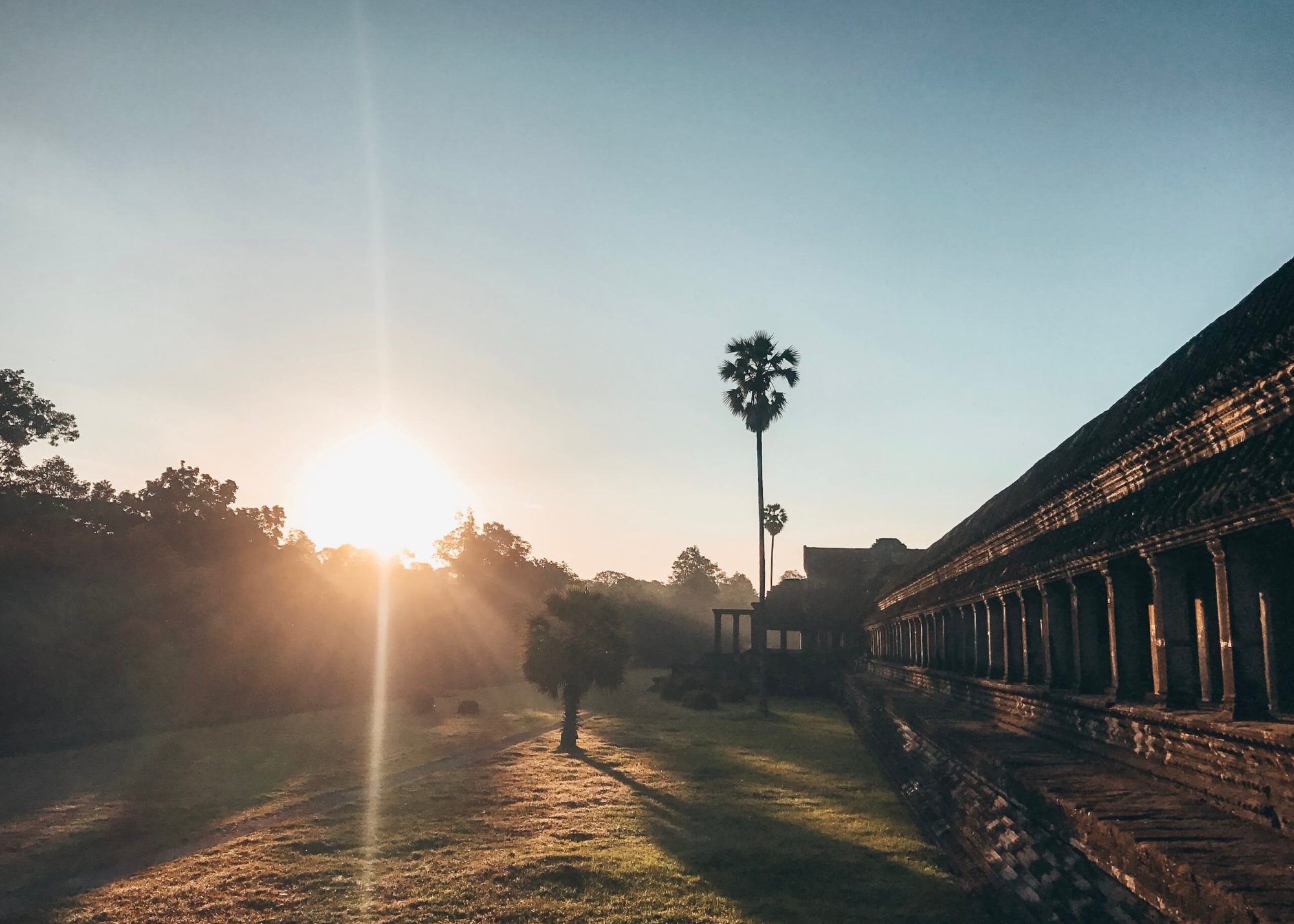
Angkor Wat - Must See
The largest religious site in the world, Angkor Wat is a spectacular 12th century temple that was originally dedicated to the Hindu god Vishnu and designed to represent Mount Meru, the sacred 5-peaked mountain of Hindu, Jain, and Buddhist cosmology. Despite the mass of crowds, a sunrise (~5 am) here is a truly unique experience. Make sure to spend time admiring the massive lengths of bas-reliefs and finding some relative solitude as the bulk of tourists eat breakfast or rub the sleep out of their eyes following the sunrise.
Phnom Bakheng
This hilltop temple near to Angkor Wat is a hotspot for sunset vistas. But with great views come great crowds. Pre-pandemic you had to arrive here early if you wanted to get a spot, but it’s much quieter these days as tourism in Cambodia is only slowly picking up again. During the day this is a place to find solitude, although it gets extremely hot during midday as there is no tree cover once you reach the temple
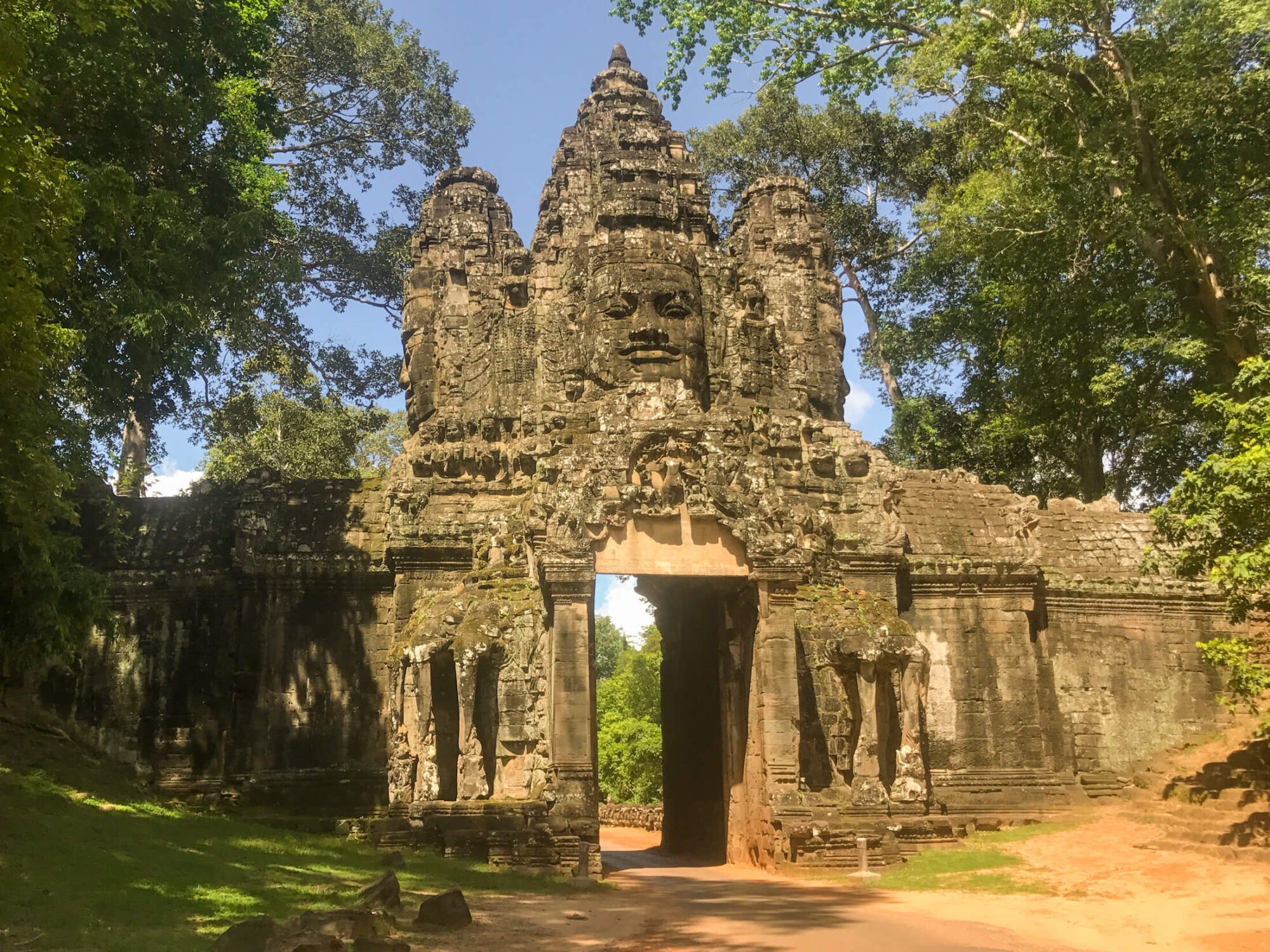
Angkor Thom
Literally means “Great City”. If ever there was an ancient city worthy of its namesake, it’s Angkor Thom. The minute you enter, over the gigantic moats, through the walls, and beneath the faces that watch over each gate, you will be taken aback by the size and scale of this ancient citadel. The following temples are highlights within the Angkor Thom complex:
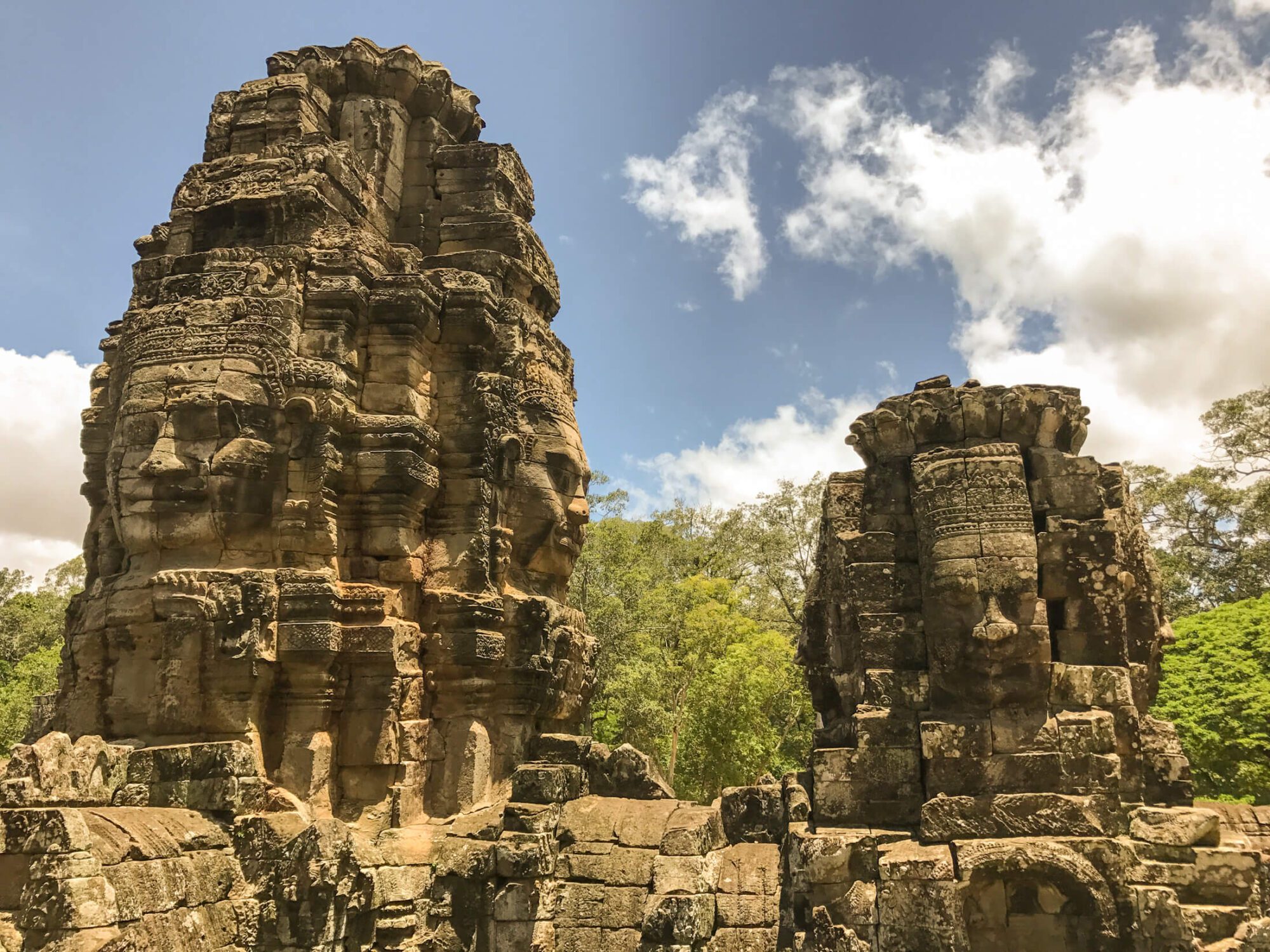
Bayon - Must See
At the heart of Angkor Thom is the Bayon. While smaller than Angkor Wat in size, the detail and 216 smiling faces adorning its towers make this temple a fan favourite. Many theorize that the faces depict King Jayavarman VII the builder of Bayon and Angkor Thom. This temple is truly spectacular in its level of detail. The upper level is currently closed for restoration, but be sure to explore the beautiful lower levels of the Bayon to peek up at the towering faces above.
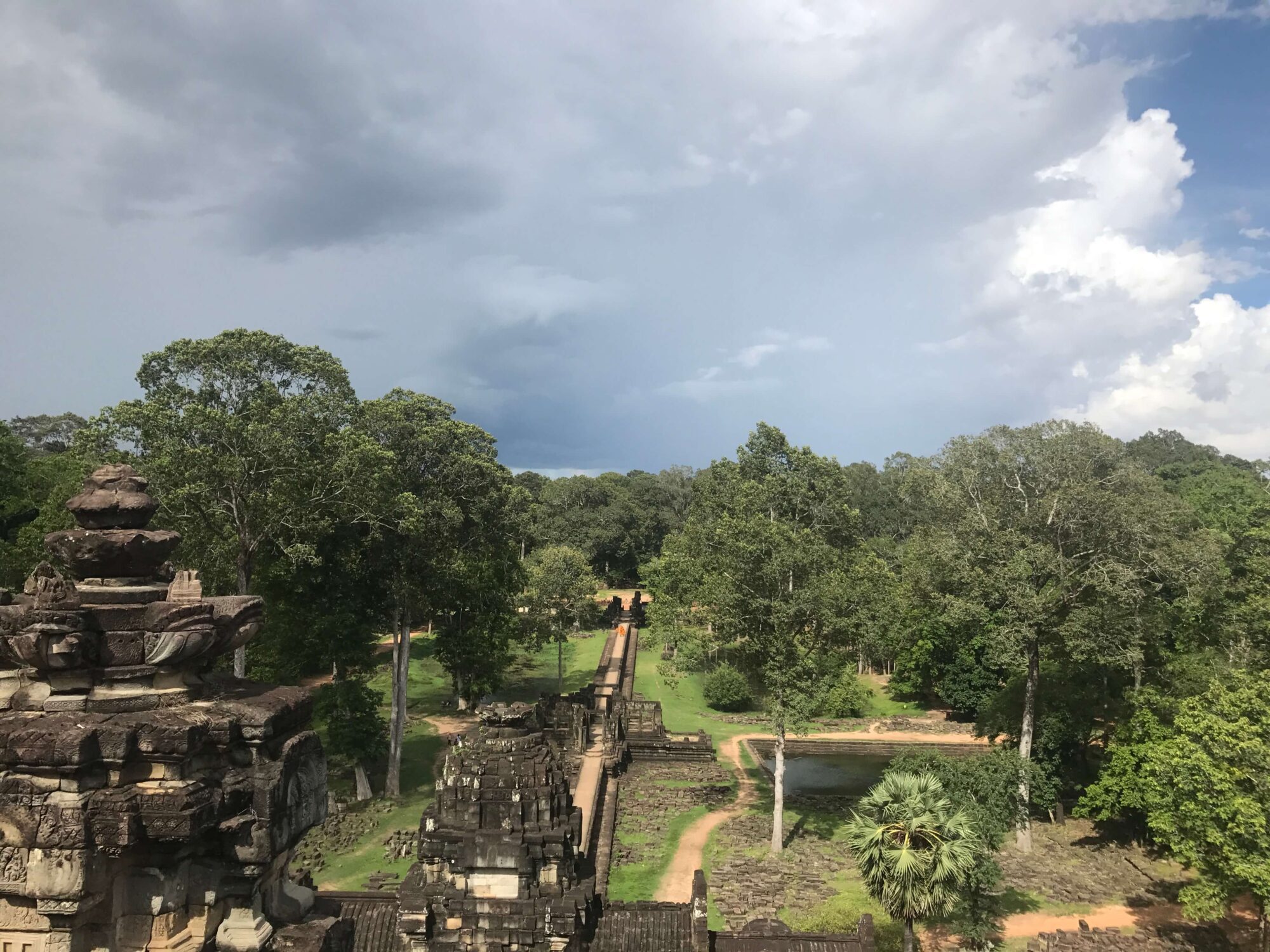
Baphuon
Slightly north of Bayon lies the 30m tall 3-tiered Baphuon. Climb the steep steps to take in the view over Angkor Thom. As you journey around this magnificent structure and observe its details, take a moment to appreciate that you’re standing on a restoration project that was 50+ years in the making. By the 20th century the Baphuon had almost entirely collapsed and an epic restoration project began. Over 300, 000 of the blocks were labelled and arranged around the area and a detailed catalogue created. Then the Khmer Rouge conflict followed and the plans were lost. In 1996 restoration resumed, and piece by piece the temple was reassembled over the span of 15 years. On April 2011 the temple reopened, fully restored. Some call it one of the world’s largest puzzles, and for good reason.
Preah Palilay
Continuing north from Baphuon, the often forgotten jungle-gem of Preah Palilay is one of my most recent favourite discoveries within Angkor Thom. Tucked away behind a Buddhist monastery in the forest, this little temple has a chimney-like tower at its centre and several huge trees entangling its base stretch almost as high as the tower itself. This temple is worth a quick visit to really feel like Indiana Jones.
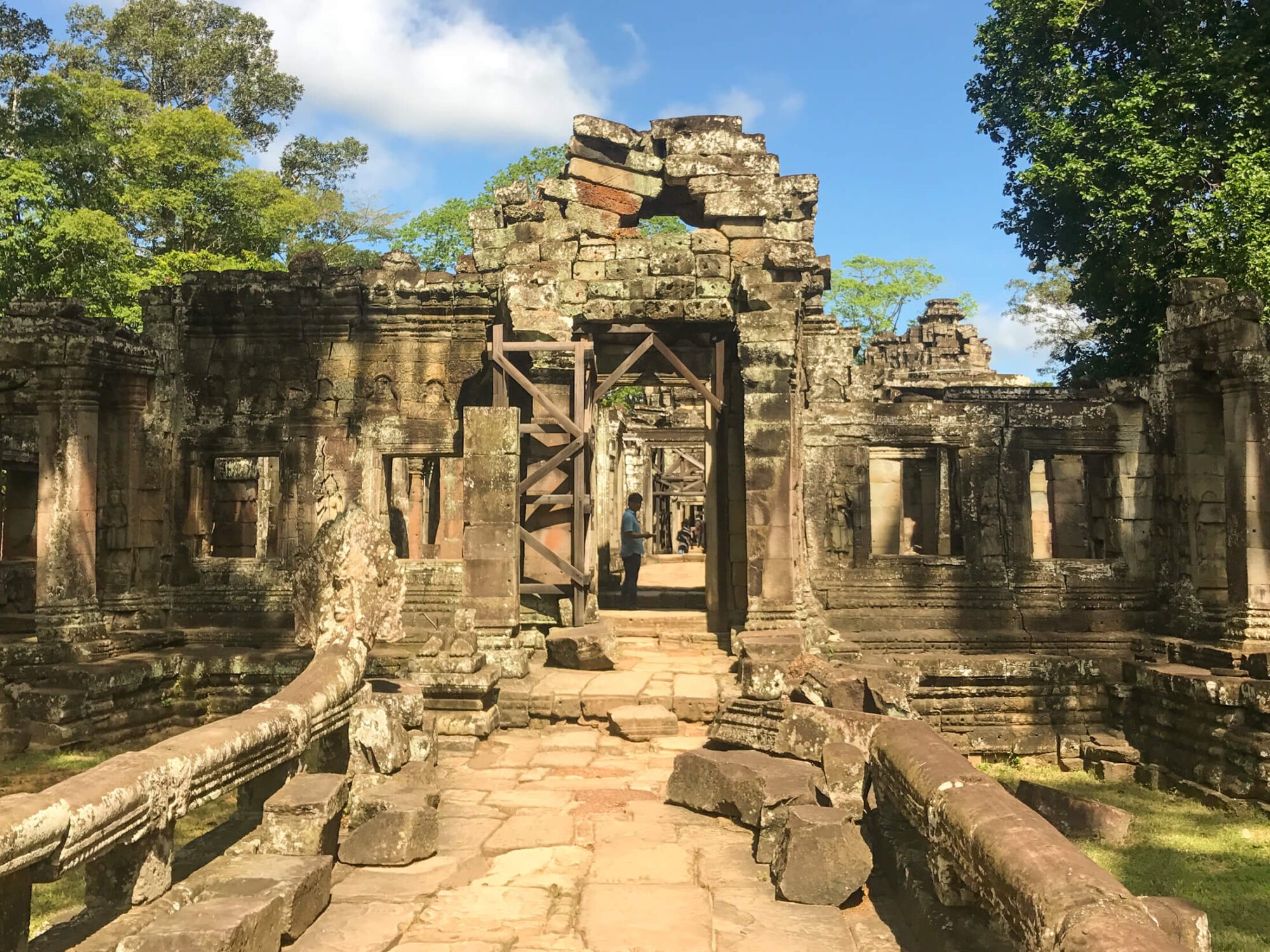
Banteay Kdei
Banteay Kdei is similar in style to Ta Prohm and Preah Khan, but a smaller version. It’s a charming little temple located across from Srah Srang lake.
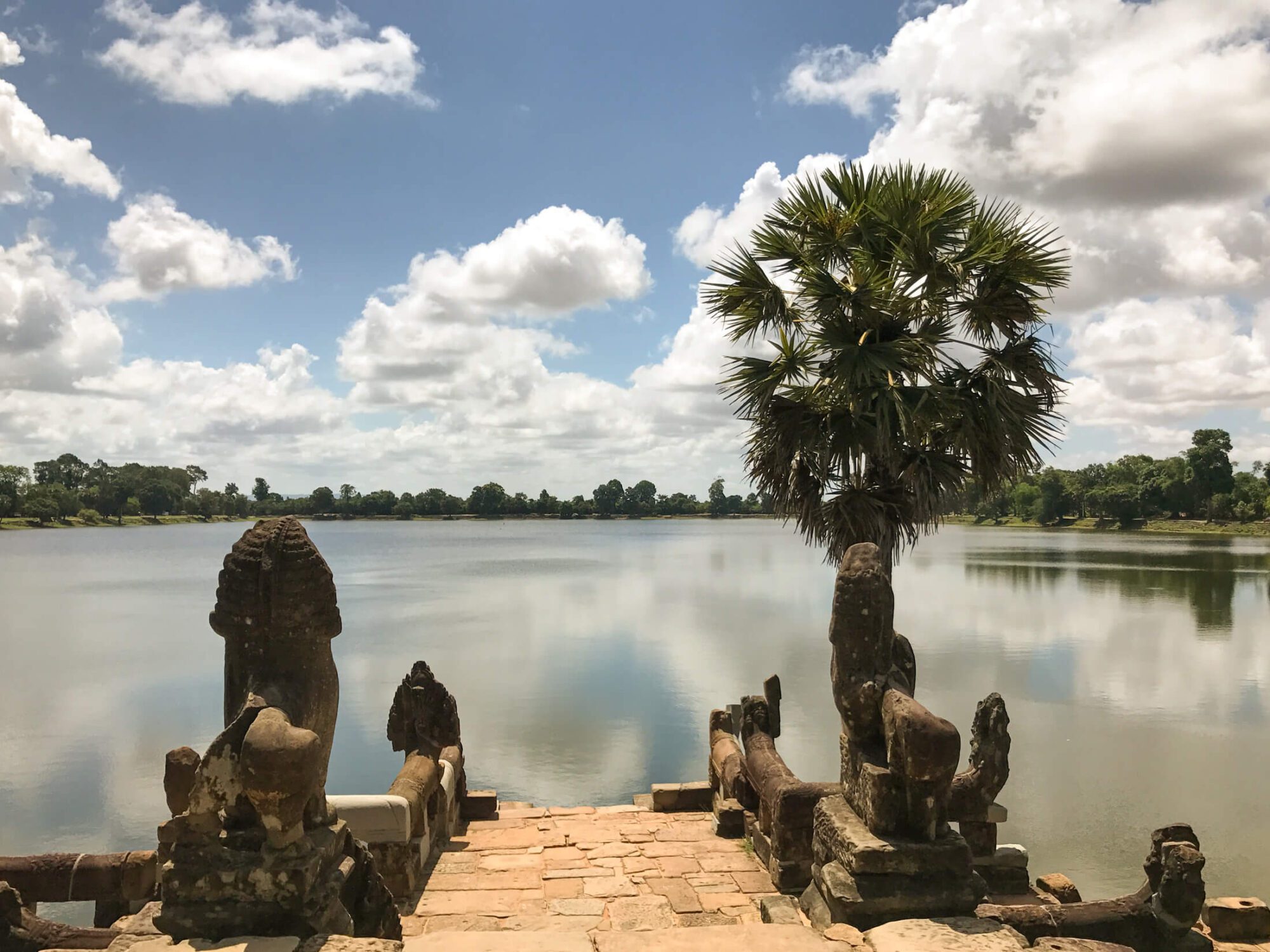
Srah Srang
This large water reservoir demonstrates the engineering capabilities of the Khmer Empire. It also happens to be a nice place to watch sunrise with fewer crowds.
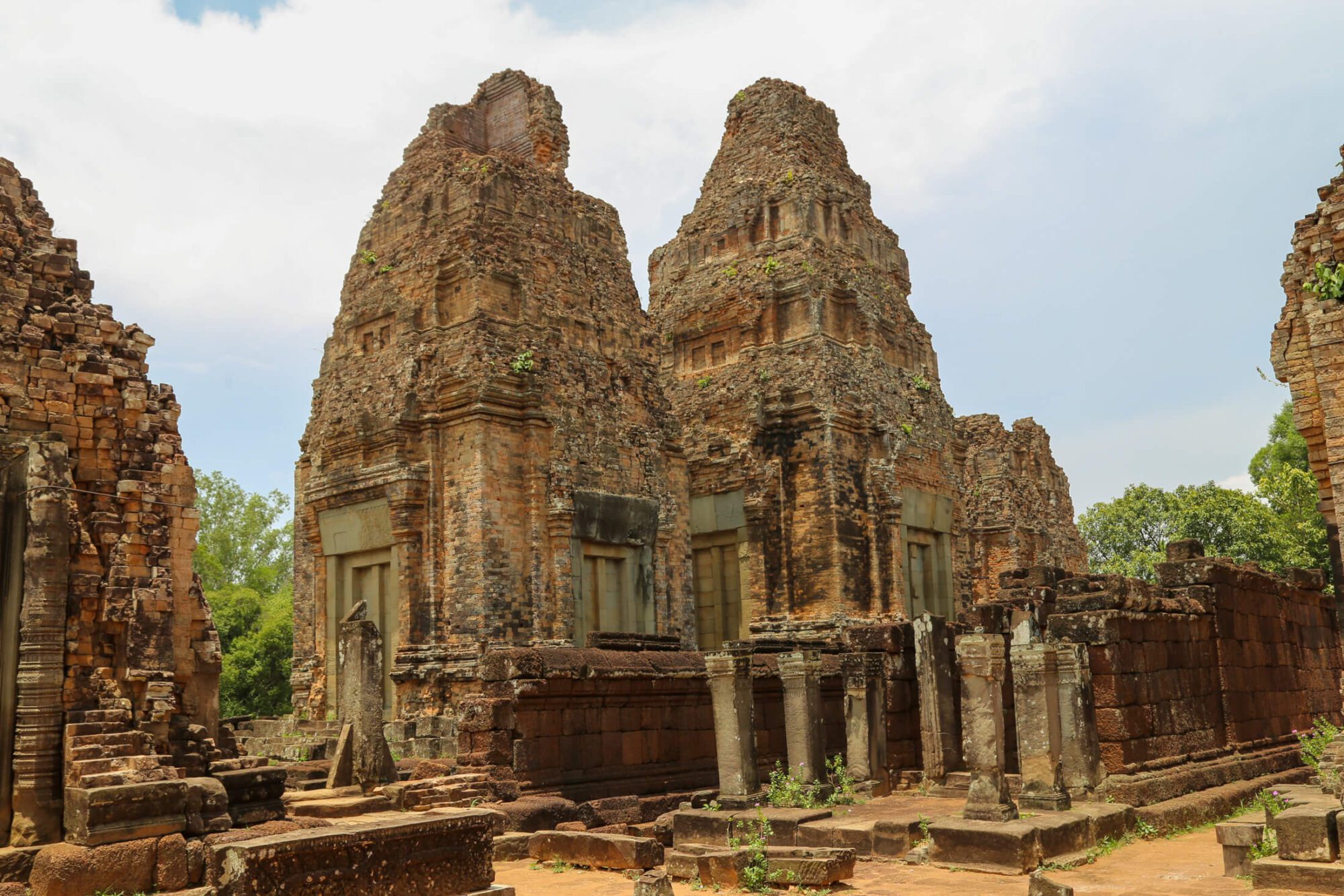
Ta Keo
Just outside of Angkor Thom lies Ta Keo. A mountain style temple dedicated to Shiva, Ta Keo was left unfinished in the 11th century. An inscription claims it was struck by lightning, a bad omen that led to a halt in its building, but the death of the temple’s commissioning King is another potential reason. Regardless, climbing Ta Keo’s three tiers of steep steps are worth the fear of slipping to get a nice view from the top level.
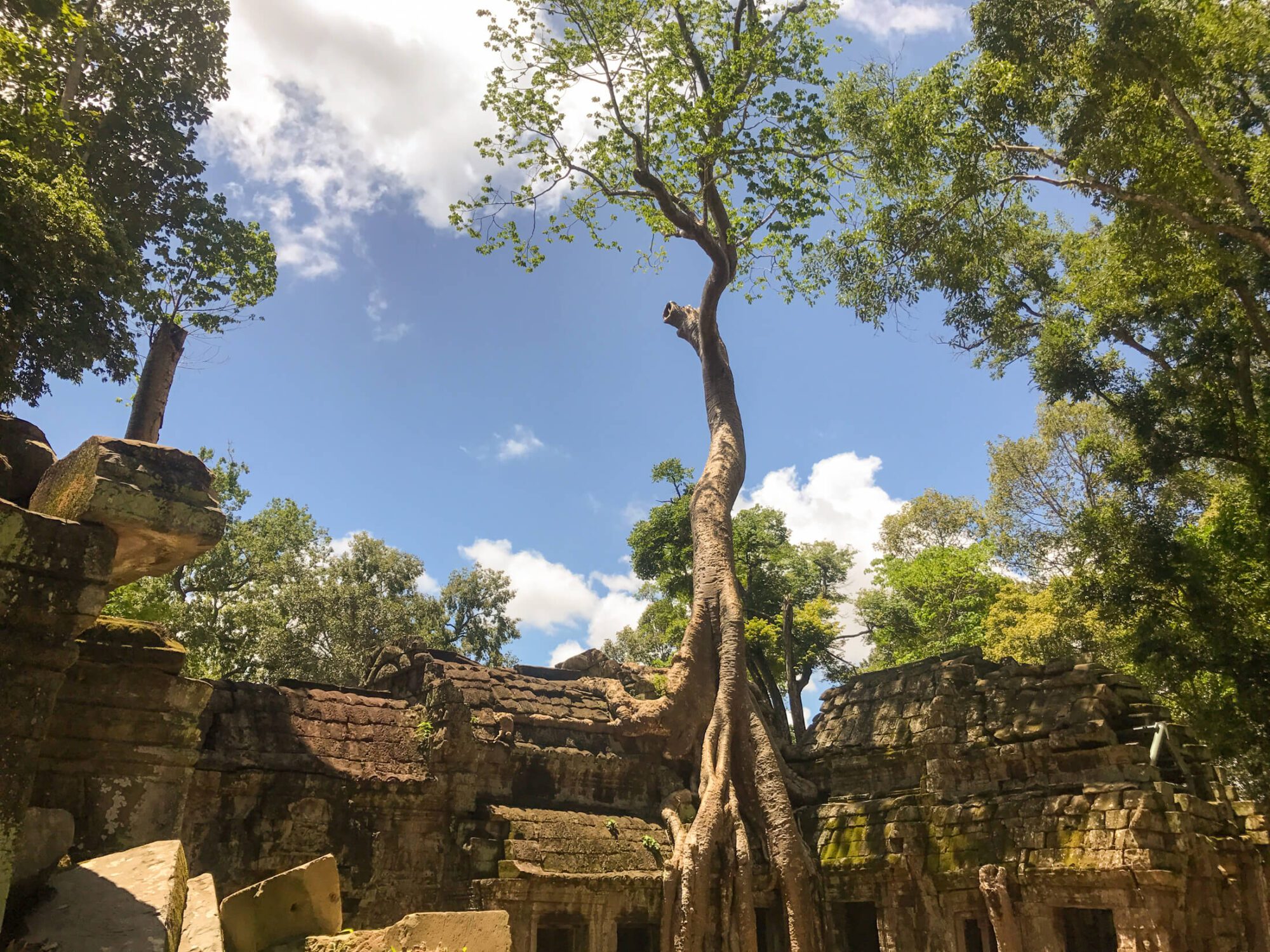
Ta Prohm - Must See
The iconic tree temple that was brought to fame by Tomb Raider lies about 1km to the east of Angkor Thom. Ta Prohm was originally built as a Mahayana Buddhist monastery and university. Today Ta Prohm is one of the most popular temples in the Angkor Archeological Park due to the fact is was left almost as it was found when rediscovered. Massive trees drape their roots over ancient stones striking up an incredible contrast of man vs. nature.
Temples to visit in the Angkor Big Loop
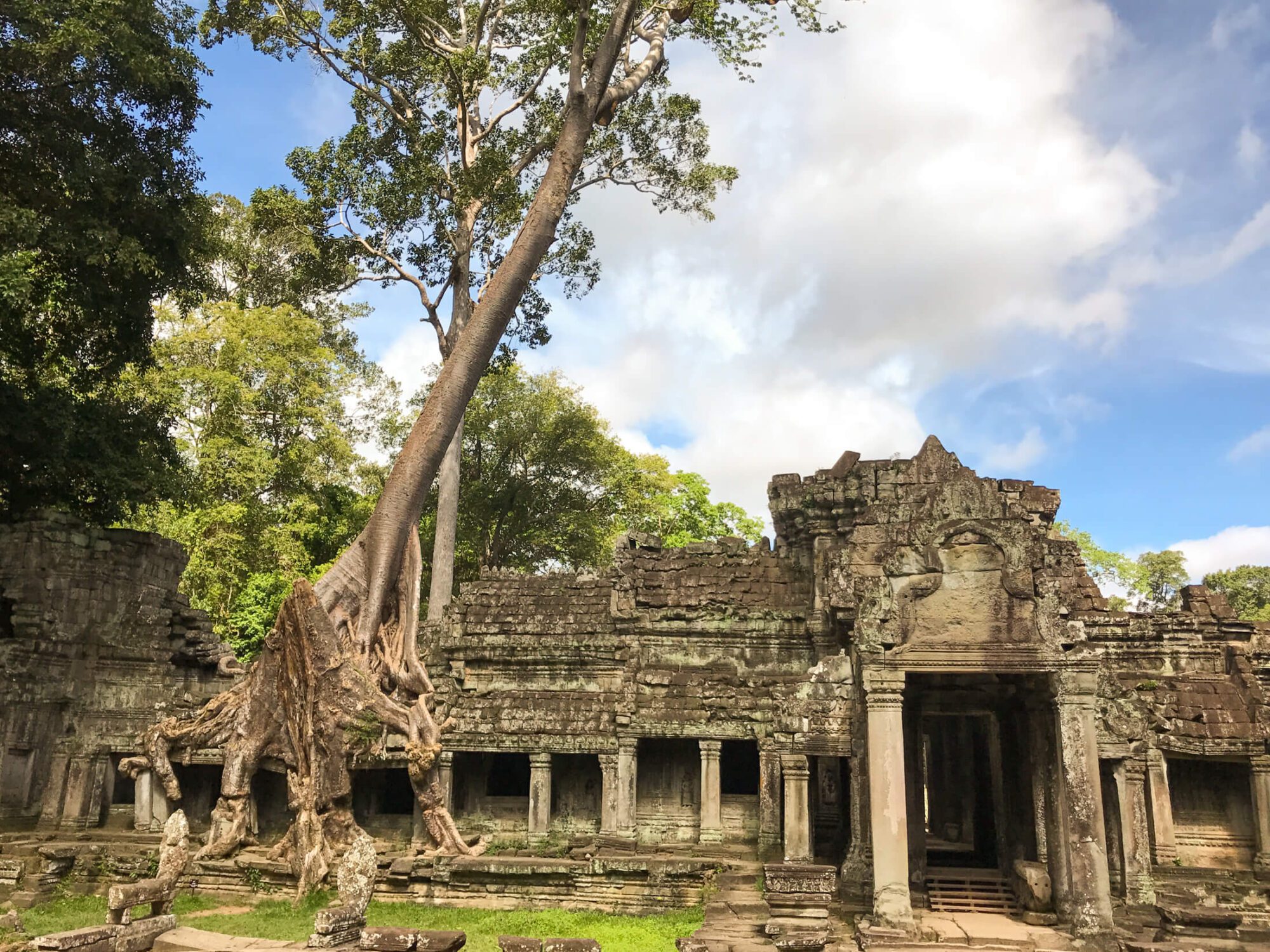
Preah Khan
Reminiscent of Ta Prohm (including the unrestored style), but with half the crowds. This temple is a must visit. Wander the many corridors and meditate among the trees. If you get your timing right, you may even have the place virtually to yourself.
Ta Som
A small temple in the theme of Preah Khan and Ta Prohm, Ta Som is another one of my favourite places. Tucked away in the jungle on a dirt road off of the main concrete circuit, this temple is often missed by the tourist hordes and I’ve had the place to myself on multiple occasions. It’s a beautiful place to navigate through the rubble and admire the trees soaring through and beyond its stone walls.
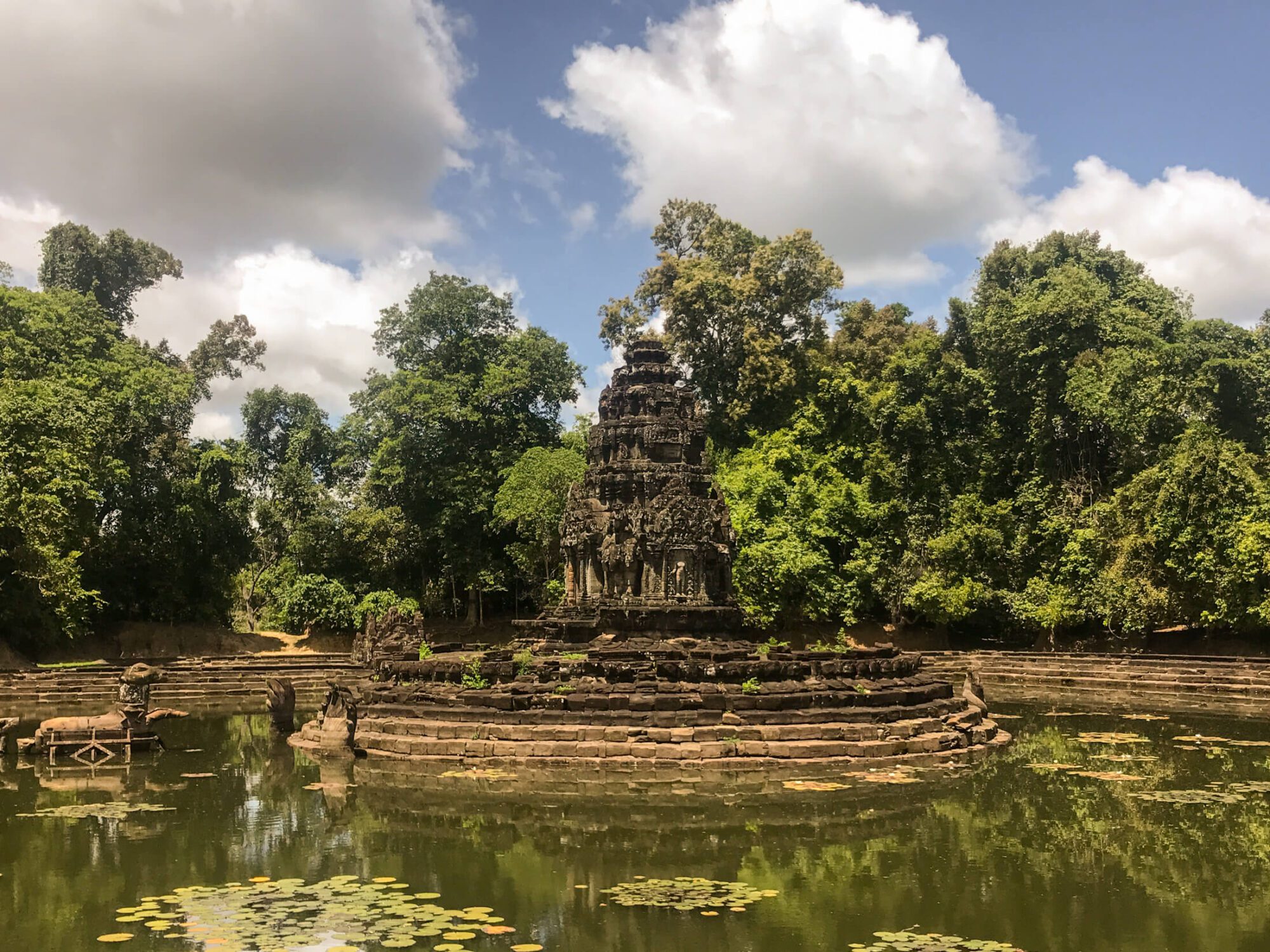
Neak Pean
Just down the road from Preah Khan lies this small and peaceful water temple. Its small size and boardwalk access can make it a little crowded during busy times, but it’s a beautiful place nonetheless.
Pre Rup
A great choice for sunset if you’re looking to avoid the crowds of Phnom Bakheng, Pre Rup offers striking views over the surrounding area. Remarkably it never gets too busy here, so climb up to Pre Rup’s top tier and sit down for a bit of relaxation to absorb the beauty of the Park.
Temples to Visit Beyond the Angkor Park
Banteay Srei
25 km northeast of Angkor Thom lies Banteay Srei. This small temple is frequently raved about for its elaborate carving that may be the most elaborate of all the temples of Angkor. You’ll need a tuk-tuk to get here, but if you have the energy after all the other temples, the carvings are worth the trip.
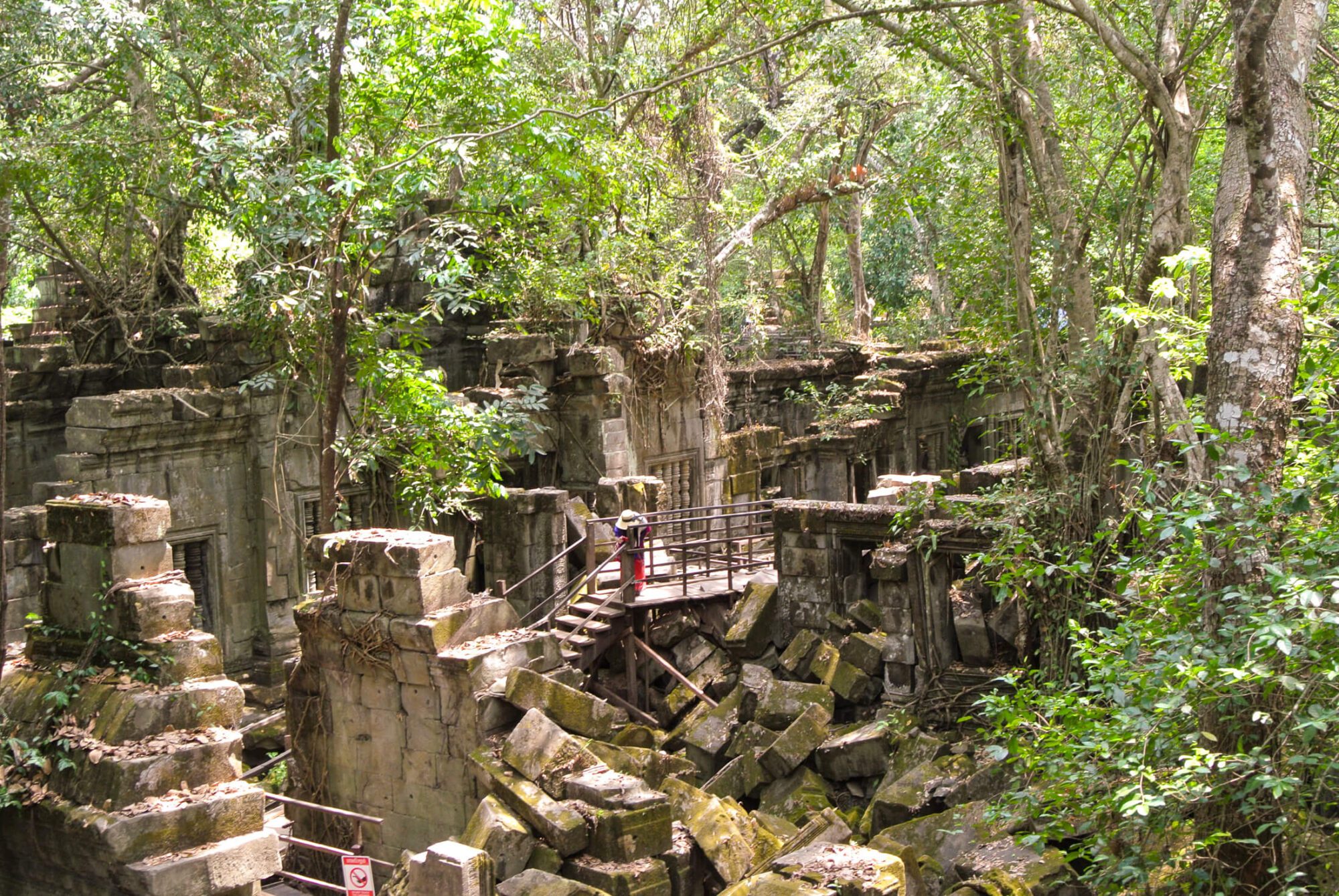
Find the Hidden Temples
If you’ve visiting all the temples in the big and smalll loop, go beyond the tourist track at these secret temples.
How many days does it take to visit the Temples of Angkor?
If you’re someone that’s alright with hitting the highlights in one whirlwind of a day, it’s possible to visit Angkor Wat and the surronding temples in 1 day (see below). Most visitors looks to space their trips out over several days which allows ample time for seeing all the major temples in the Angkor Archeological Park.
How to visit the Temples of Angkor in 1 day
Visiting Angkor in 1 day is a whirlwind, but if you’re short on time here’s my recommendation on how to do it. If you’re biking, count on a commute of 1 hour to Angkor Wat if you’re staying on the northern side of Siem Reap, longer if you’re staying elsewhere. (Take it from someone who missed the sunrise not once but twice. Don’t miss it…)
Click the name to link back to the description above if you need to refresh your memory of a particular temple!

5:00 am Sunrise at Angkor Wat
7:30 am Angkor Thom
12:30 pm Lunch in Angkor Thom
1:30 pm Quick stop at Ta Keo
2:00 pm Ta Prohm
4:00 pm Banteay Kdei
5-6 pm Watch the sunset at Srah Srang or frantically back pedal through Angkor Thom and watch from the hilltop temple of Phnom Bakheng (leave early or cut Banteay Kdei if choosing this option to be sure you get a spot).
7 pm Relax. Take a deep breath. You saw the highlights of Angkor in 1 crazy day.
How to visit the Temples of Angkor in 3 days
3 days is the perfect amount of time to get the full Angkor experience. It’s a busy 3 days , but affords you the time to see all the temples you want at a somewhat relaxed pace. Here’s how to do it!
You can click the name to link back to the temple description above if you need to refresh your memory.
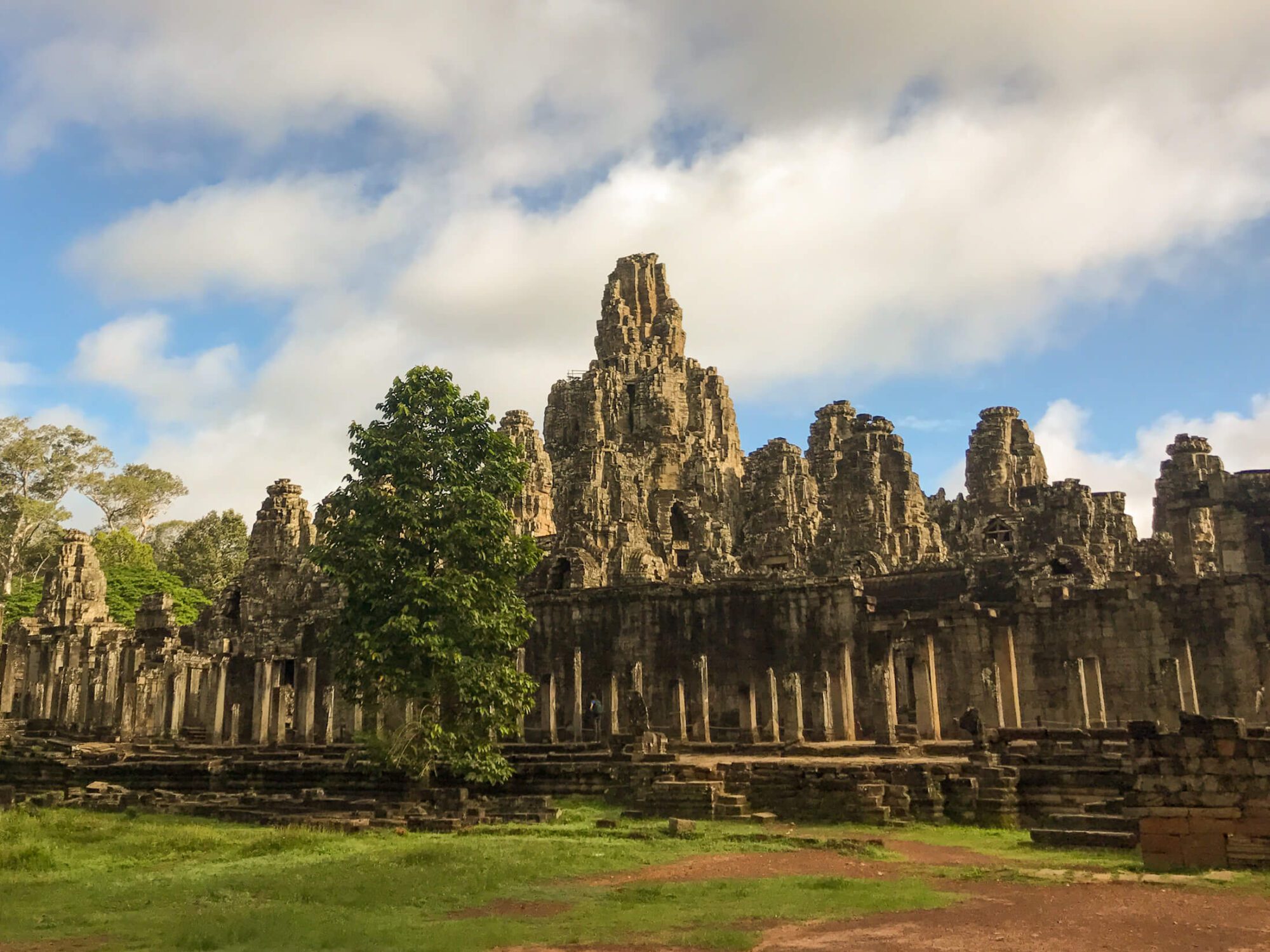
Temples of Angkor Itinerary Day 1: Angkor Wat & Ta Phrom
Stop 1: Angkor Wat
Start the day at the world famous Angkor Wat if you can bring yourself to wake up for the sunrise (5 am). It really is a breathtaking (albeit crowded) experience. Spend several hours admiring the vast bas-reliefs and queuing up to climb the steep steps to the upper level. Grab breakfast, a less than fantastic coffee, or the snack of your choosing at one of the many stalls/cafes along the north side of Angkor Wat.
Stop 2: Srah Srang & Banteay Kdei
Instead of proceeding north to Angkor Thom (we’ll save that for day 2), head east to Srah Srang and Banteay Kdei. Spend some time enjoying the reservoir and small temple.
Stop 3: Ta Prohm
Explore the magnificent Ta Prohm and get to know your inner Indiana Jones or Lara Croft (among many other people trying to do the same thing).
Stop 4: Ta Keo
Take the time to climb up the Ta Keo mountain temple, before calling your first day. If you made it for the sunrise at Angkor Wat, you may be itching for a nap. Even if you didn’t make sunrise, you’re likely going to be itching to cool down poolside with an ice cold Angkor draft, or maybe a nap and a cool down…
Temples of Angkor Itinerary Day 2: Angkor Thom
Cycle past Angkor Wat and proceed through the south gate into the great city of Angkor Thom. The temples in here don’t open until 7:30, but if you take the time to arrive around this time you’ll be rewarded with far fewer crowds than later in the day. Better yet, the morning is generally mildly cooler.
Stop 1: The Gates
No matter how you enter Angkor Thom, you’ll pass over the great moat and through an intimidating set of gates and walls towering over 9m tall.
Stop 2: Bayon
At the centre of Angkor Thom this incredible temple can easily occupy several hours of exploration. Wander along the Terrace of the Leper King and Terrace of the Elephants, transporting yourself back to a time when this parade route would have seen kings returning victorious from battle.
Stop 3: Baphuon
Conclude your day by summiting the world’s biggest jigsaw puzzle and admiring the amazing restoration work.
Then...
Afternoon (time dependent) in Siem Reap or visit further out Banteay Srei by tuk-tuk or motorbike.
Temples of Angkor Itinerary Day 3: The Big Circuit
An early start will once again be to your advantage. Set out biking past Angkor Wat and Angkor Thom before continuing through the north gate until you reach Preah Khan.
Stop 1: Preah Khan
Wander through this massive temple and enjoy the relative quiet compared to the temples along the small circuit. Find a spot to sit and appreciate the power of the gigantic trees that engulf this temple.
Stop 2: Neak Pean, Ta Som and Pre Rup
Once you’ve finished at Preah Khan, continue down the road, stopping at Neak Pean and wandering across the boardwalk before proceeding onwards to Ta Som and concluding at Pre Rup.
Conclude Your Time at Angkor
If you’re not templed-out, bike back past Ta Prohm and through Angkor Thom, taking the time to stop at your favourites one more time. You also have the option to climb up Phnom Bakheng and bid adieu to your time at Angkor with a view. If it’s later on in the day already, you may even want to take the time to linger and watch the sunset over Angkor Wat. The perfect conclusion to the way you started.
Final thoughts
Hopefully, you found these tips helpful for planning your trip to Angkor Wat and the temples of Angkor. Questions? Drop me a line in the comments below and I’ll do my best to help you out!
Disclaimer: Some of the links in this post are affiliate links. If you click one of the links and make a purchase we’ll earn a small commission at no cost to you. Just like the travel backpacks we build, we’re very particular . So any products or services we suggest, we test and use ourselves before making any recommendations or endorsements.
Banana Backpacks Inc. is a participant in the Amazon Services LLC Associates Program, an affiliate advertising program designed to provide a means for sites to earn advertising fees by advertising and linking to Amazon.com
More adventures like this

Cambodia’s Best Motorbike Trips | 3 Incredible Adventures in the Kingdom of Wonder
From hidden temples to deserted hill stations, Cambodia is the perfect country to go on a motorbike adventure. Here are 3 of the best!
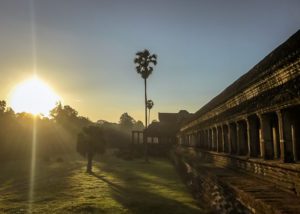
Things to do in Cambodia | 50 Adventures in the Kingdom of Wonder
These 50 incredible things to do will help you plan the ultimate Cambodian adventure! Discover secret temples, kayak remote backwaters, and take your trip to the next level with this guide.
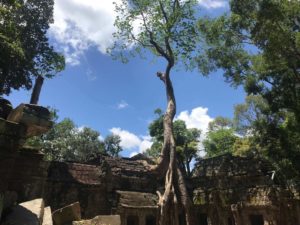
The 5 Best Cambodia Itineraries | Plan the Perfect Cambodia Trip
After living and exploring Cambodia for years, I’ve put together this robust travel guide and itinerary planner. If you’re planning a trip to Cambodia and mapping out the perfect Cambodia itinerary there’s something in the post for you!

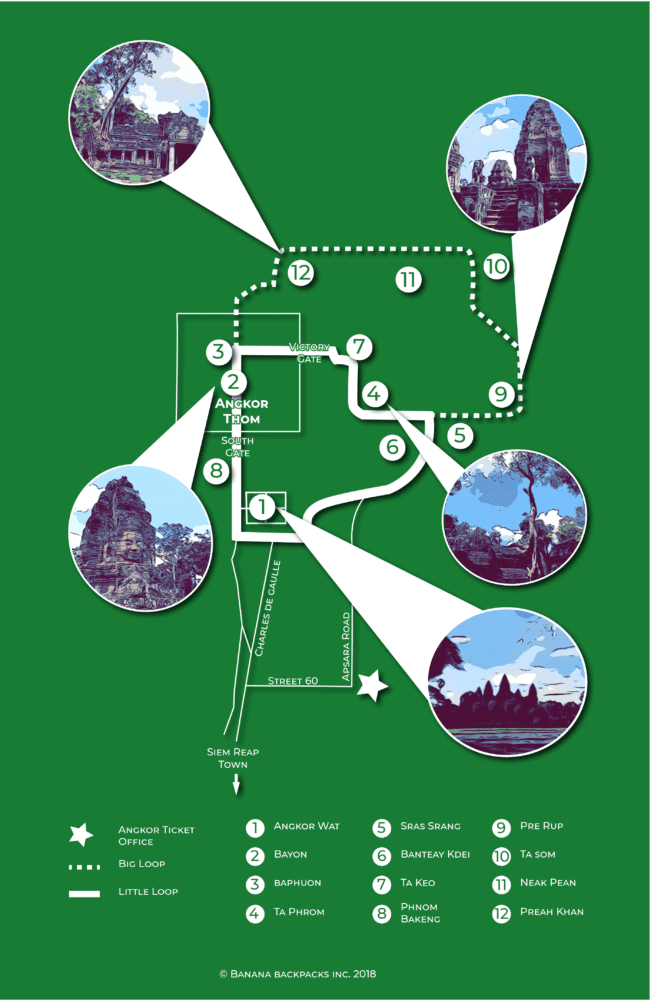


2 Responses
Hello,
I don’t have a question- just wanted to say my husband and I followed your 3 day itinerary and absolutely loved it! Your advice is fantastic and very clear to follow. Thank you 🙂
Thanks Alice. Glad you found our guidance helpful! Happy adventuring! 🙂